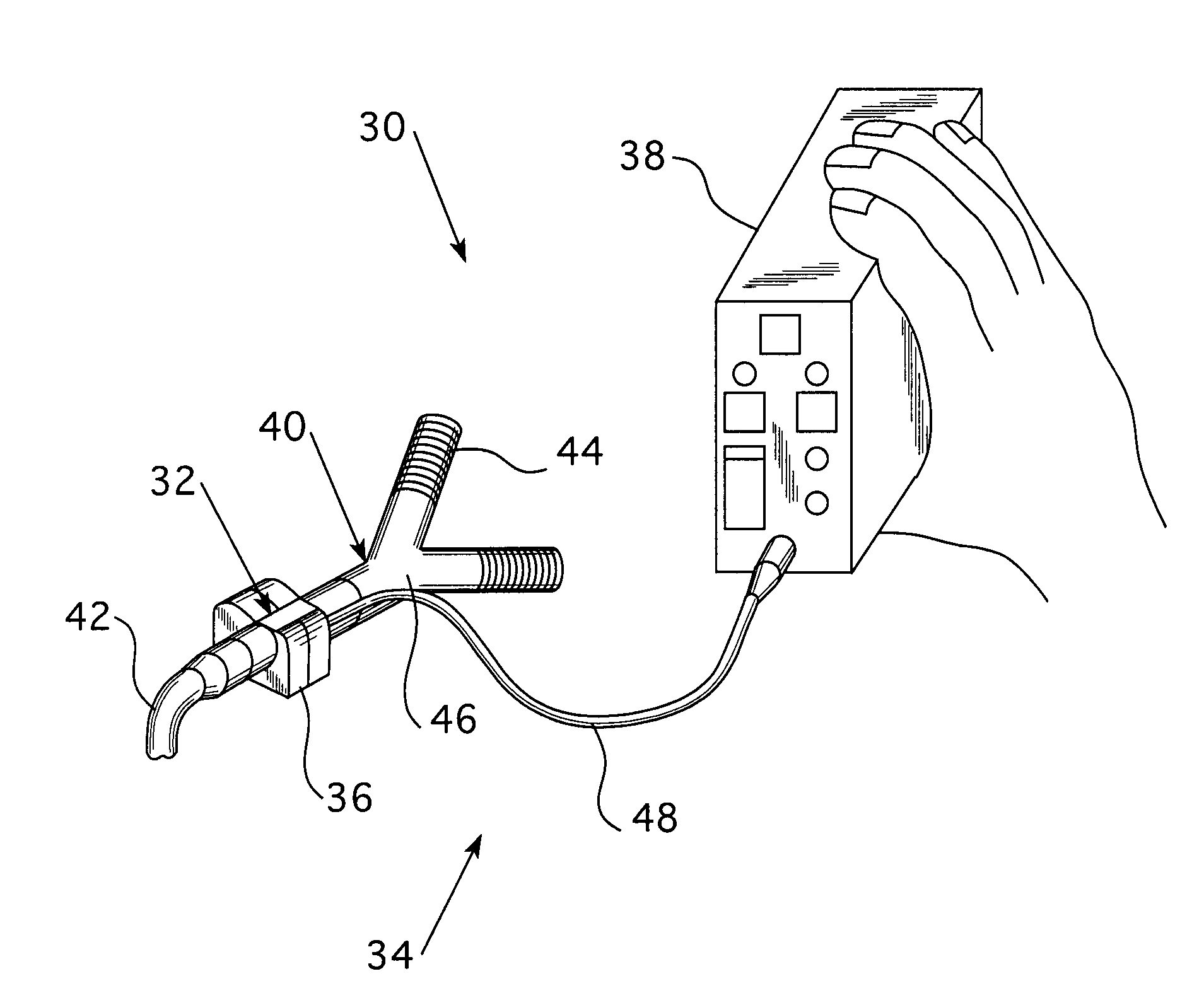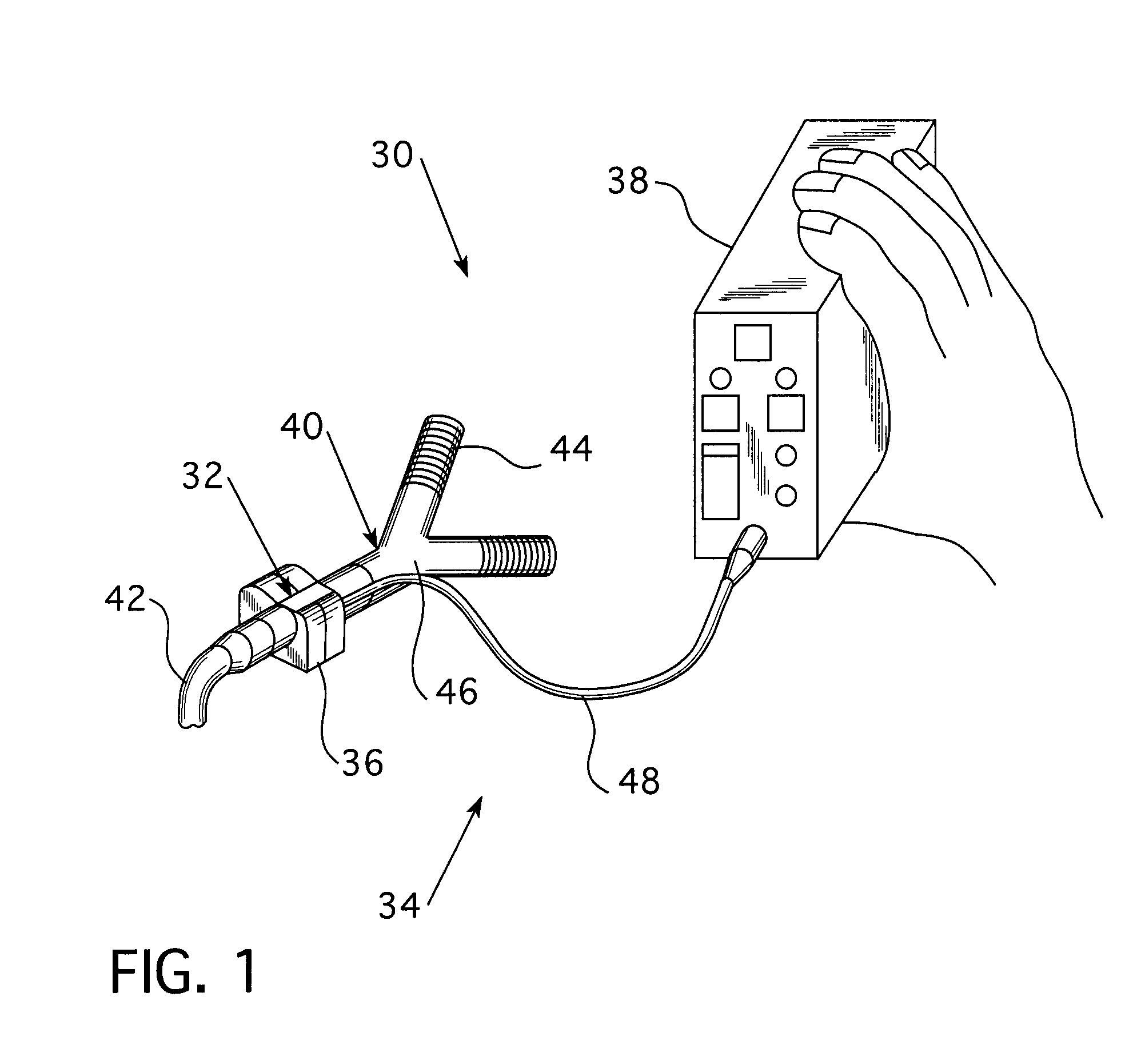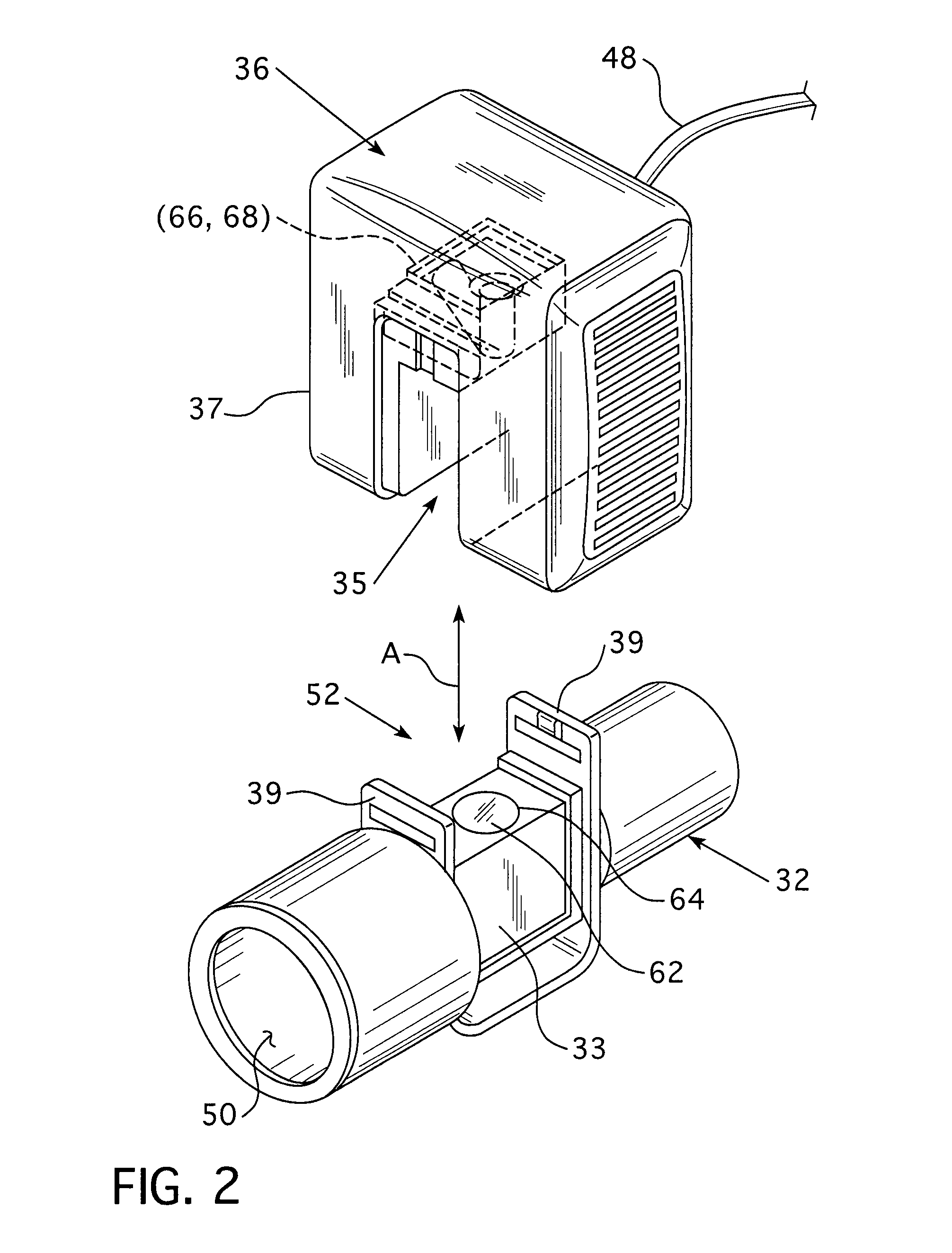Temperature Compensation of a Respiratory Gas Sensor
a technology of respiratory gas and temperature compensation, which is applied in the field of temperature compensation of respiratory gas sensors, can solve the problems of inability to completely eliminate or completely correct the temperature fluctuations resulting from respiratory flow changes, errors that affect both vi and ve measurements, and interference of mainstream sensors used to measure respiratory gas constituents
- Summary
- Abstract
- Description
- Claims
- Application Information
AI Technical Summary
Benefits of technology
Problems solved by technology
Method used
Image
Examples
Embodiment Construction
[0030]FIG. 1 schematically illustrates an exemplary embodiment of a mainstream gas monitoring system 30 that employs the principles of the present invention. Gas monitoring system 30 includes an airway adapter 32 for use in a respiratory circuit 40, and a gas sensing assembly, generally indicated at 34. Respiratory circuit 40 is used to communicate a flow of gas to a patient. For example, a first end 42 of respiratory circuit 40 is connected with a patient interface appliance configured to communicate with an airway of a patient. Examples of patient interface appliances that are suitable for use with respiratory circuit 40 include, but are not limited to: an endotracheal tube, a nasal cannula, a tracheotomy tube, a mask, or any other device or apparatus that communicates a flow of gas with an airway of a user.
[0031]A second end 44 of respiratory circuit 40 is configured to communicate with a gas source. For instance, the gas source may include ambient atmosphere, a supply of pressur...
PUM
 Login to View More
Login to View More Abstract
Description
Claims
Application Information
 Login to View More
Login to View More - R&D
- Intellectual Property
- Life Sciences
- Materials
- Tech Scout
- Unparalleled Data Quality
- Higher Quality Content
- 60% Fewer Hallucinations
Browse by: Latest US Patents, China's latest patents, Technical Efficacy Thesaurus, Application Domain, Technology Topic, Popular Technical Reports.
© 2025 PatSnap. All rights reserved.Legal|Privacy policy|Modern Slavery Act Transparency Statement|Sitemap|About US| Contact US: help@patsnap.com



